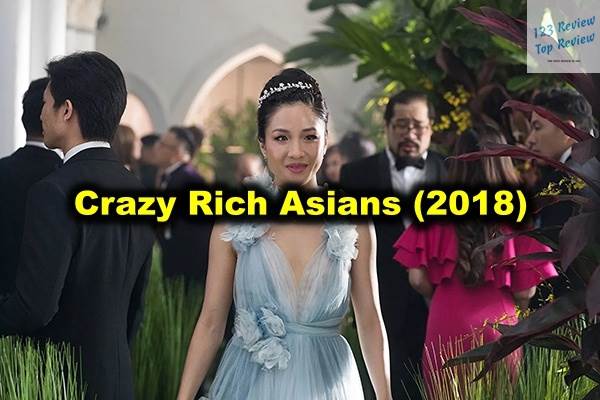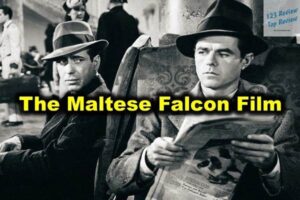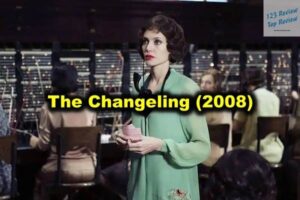Directed by Jon M. Chu and based on Kevin Kwan’s best-selling novel of the same name, the Crazy Rich Asians film dives deep into the opulent world of Singapore’s elite while unraveling the complex dynamics of love, family, and identity. It stands as a testament to the power of representation and the universality of its themes, resonating with audiences worldwide.
Plot Overview
“Crazy Rich Asians” tells the story of Rachel Chu, a Chinese-American economics professor at New York University, who embarks on a life-changing journey to Singapore with her boyfriend, Nick Young. What begins as an invitation to attend a friend’s wedding quickly evolves into a whirlwind of challenges as Rachel discovers that Nick is not just wealthy, but insanely rich—one of Asia’s most eligible bachelors and the heir to an enormous fortune.

This revelation thrusts Rachel into the unfamiliar and often overwhelming world of Singapore’s high society, where she must navigate the complexities of class, culture, and family expectations.
Main Characters and Their Roles
- Rachel Chu: The intelligent and independent protagonist who, despite her academic success, finds herself out of her depth in the world of Singapore’s elite. Rachel’s character embodies resilience and grace as she faces judgment and scrutiny from those who see her as unworthy of Nick.
- Nick Young: The charming and down-to-earth scion of the Young family, who has kept his immense wealth a secret from Rachel. Nick’s struggle between his love for Rachel and his familial obligations forms the emotional core of the film.
- Eleanor Young: Nick’s formidable mother, who wields considerable influence within the family. Eleanor is a traditionalist who values family legacy above all else, and she views Rachel as an outsider who could disrupt the carefully maintained balance of their world.
- Astrid Leong-Teo: Nick’s cousin, often described as the “goddess” of Singapore society. Astrid’s story of personal struggle, particularly in her marriage, adds depth to the film’s exploration of wealth and its impact on relationships.
- Peik Lin Goh: Rachel’s quirky and outspoken college friend who provides comic relief and much-needed support as Rachel navigates the challenges of Singaporean society.
Key Conflicts and Themes
At the heart of “Crazy Rich Asians” are several conflicts that drive the narrative forward. The most prominent is the clash between Rachel and Eleanor, symbolizing the broader tension between tradition and modernity. Eleanor represents the old guard of Asian families, where wealth, status, and familial duty are paramount, while Rachel embodies a new generation that values personal happiness and individual achievement.
Another key conflict is the internal struggle faced by Nick as he attempts to balance his love for Rachel with his responsibilities to his family. This tension is further complicated by the societal expectations placed upon him as the heir to one of Asia’s most prominent families.
Themes of identity, belonging, and cultural heritage are intricately woven throughout the film. Rachel’s journey is not just about winning over Nick’s family but also about reconciling her Chinese roots with her American upbringing. The film deftly explores these themes, offering a nuanced portrayal of the immigrant experience and the cultural duality faced by many Asian-Americans.
Cultural Significance
“Crazy Rich Asians” holds immense cultural significance, as it was the first major Hollywood film in 25 years to feature a predominantly Asian cast, following 1993’s “The Joy Luck Club.” Its release marked a turning point in Hollywood’s approach to diversity and representation, proving that stories centered on Asian characters could achieve both critical acclaim and commercial success.
The film challenged long-standing stereotypes and provided a more accurate and multifaceted portrayal of Asian culture. It celebrated the richness of Asian traditions, from the lavish wedding sequences to the intricate details of family rituals, while also highlighting the pressures and expectations within Asian societies.
Moreover, “Crazy Rich Asians” ignited important conversations about the need for greater representation in media. It resonated deeply with Asian audiences who saw their lives and cultures reflected on screen in a way that was both authentic and empowering. For many, the film represented a reclaiming of narratives that had long been sidelined or misrepresented in Western cinema.
Cinematic Elements
The success of “Crazy Rich Asians” is not solely due to its engaging story and relatable characters but also to its exceptional cinematic elements. The film’s direction, cinematography, production design, and music all contribute to creating a visually stunning and emotionally resonant experience.
Direction and Cinematography
Under the direction of Jon M. Chu, “Crazy Rich Asians” transforms from a simple romantic comedy into a vibrant and visually captivating spectacle. Chu’s vision for the film is clear—he wanted to showcase the opulence and grandeur of Singapore’s elite while also ensuring that the cultural and emotional nuances of the story were not lost.
The cinematography by Vanja Černjul plays a crucial role in achieving this vision. From the breathtaking aerial shots of Singapore’s skyline to the intimate close-ups during emotionally charged scenes, the camera work in “Crazy Rich Asians” is both dynamic and meticulous. The film’s visuals are a feast for the eyes, capturing the lush beauty of Singapore’s landscapes as well as the intricate details of its luxurious interiors.
The use of color in the film is particularly noteworthy. The vibrant hues of the costumes and sets are not just visually striking but also serve to reflect the emotional states of the characters. For example, the lavish wedding scene, with its explosion of color and light, symbolizes the excess and grandeur of the world Rachel is entering, while also highlighting her sense of being an outsider.
Costume and Production Design
The costume design by Mary E. Vogt is another standout element of the film. The costumes are not just beautiful but also carefully crafted to reflect the personalities and social standings of the characters. Rachel’s wardrobe evolves throughout the film, starting with understated, elegant pieces that reflect her modest background, and gradually becoming more sophisticated as she gains confidence in her new environment.
Eleanor’s wardrobe, on the other hand, is characterized by traditional and regal attire, emphasizing her role as the matriarch of the Young family. Her clothes are often in rich, dark colors, symbolizing her authority and her adherence to tradition.
The production design, overseen by Nelson Coates, is equally impressive. The sets are opulent and meticulously detailed, reflecting the wealth and status of the characters. From the grandiose Young family mansion to the extravagant party scenes, every aspect of the production design is designed to immerse the audience in the world of Singapore’s elite.
The film also pays homage to Singapore’s unique blend of modernity and tradition. The use of iconic locations, such as the Marina Bay Sands and the Raffles Hotel, alongside traditional settings like the bustling hawker centers, adds depth to the film’s portrayal of Singapore as a city that straddles the old and the new.
Music and Soundtrack
The soundtrack of “Crazy Rich Asians” is a masterful blend of East and West, reflecting the film’s themes of cultural duality. Curated by composer Brian Tyler, the music includes a mix of contemporary pop hits and classic Asian songs, creating a rich and varied auditory experience.
One of the most memorable tracks is the Chinese version of Coldplay’s “Yellow,” performed by Katherine Ho. This song, which plays during a pivotal moment in the film, has a profound emotional impact, symbolizing Rachel’s journey of self-acceptance and her reconnection with her cultural heritage.
The use of music in the film is not just about setting the mood but also about enhancing the storytelling. The soundtrack helps to underscore the film’s emotional beats, from the lighthearted moments of comedy to the more dramatic and introspective scenes. The music also serves as a bridge between cultures, reflecting the film’s broader themes of identity and belonging.
Character Development
The characters in “Crazy Rich Asians” are richly developed, each undergoing significant growth throughout the film. Their journeys are central to the film’s emotional resonance, offering audiences relatable and compelling arcs that drive the story forward.
Rachel Chu’s Journey
Rachel Chu’s journey is the heart of “Crazy Rich Asians.” At the beginning of the film, Rachel is a confident and successful woman, secure in her relationship with Nick and unaware of the challenges that lie ahead. However, as she enters the world of Singapore’s elite, she quickly realizes that her academic achievements and personal accomplishments are not enough to gain acceptance in this new environment.
Rachel’s character arc is one of self-discovery and empowerment. She starts as an outsider, feeling overwhelmed and out of place among Nick’s wealthy relatives and friends. However, through her determination and resilience, Rachel gradually finds her footing. Her confrontation with Eleanor in the mahjong scene is a pivotal moment, showcasing her strength and her ability to stand up for herself. In this scene, Rachel not only asserts her worth but also demonstrates her deep understanding of Chinese culture, turning the tables on Eleanor in a way that is both respectful and empowering.
By the end of the film, Rachel has undergone significant growth. She is no longer the wide-eyed outsider but a confident woman who knows her value and is not afraid to demand the respect she deserves. Her decision to reject Nick’s initial proposal, despite her love for him, highlights her integrity and her unwillingness to compromise her values, even in the face of great personal sacrifice.
Nick Young’s Background
Nick Young’s character is defined by his internal conflict between love and duty. As the heir to the Young family fortune, Nick has grown up under the weight of immense expectations. He is expected to continue the family legacy, which includes marrying someone of suitable social standing and eventually taking over the family business.
Nick’s decision to keep his wealth a secret from Rachel is indicative of his desire to be loved for who he is, not for what he represents. Throughout the film, Nick struggles to reconcile his love for Rachel with his obligations to his family. His journey is one of self-realization, as he comes to understand that he cannot live his life according to the expectations of others.
Nick’s proposal to Rachel at the end of the film represents a significant turning point in his character. By choosing Rachel over his family’s approval, Nick asserts his independence and his desire to build a life based on love and mutual respect rather than wealth and status. This decision is a testament to the strength of his character and his commitment to Rachel.
Eleanor Young’s Values
Eleanor Young is one of the most complex characters in “Crazy Rich Asians.” Initially portrayed as the antagonist, Eleanor’s character is gradually revealed to be more nuanced and multi-dimensional. Her actions, while often harsh and uncompromising, are driven by a deep sense of duty to her family and a desire to protect the Young family legacy.
Eleanor’s relationship with Rachel is fraught with tension from the start. She sees Rachel as a threat to the stability and traditions of the Young family and is determined to prevent her from marrying Nick. However, Eleanor’s motivations are rooted in her own experiences as an outsider who married into the Young family. Her strict adherence to tradition and her insistence on maintaining the family’s social status are a reflection of the sacrifices she has made to secure her place in the family.
The mahjong scene between Eleanor and Rachel is a turning point in Eleanor’s character arc. In this scene, Eleanor comes to recognize Rachel’s strength and integrity, leading to a grudging respect for her potential daughter-in-law. By the end of the film, Eleanor’s softened stance towards Rachel suggests a potential for reconciliation and a deeper understanding between the two women.
Astrid Leong’s Story
Astrid Leong-Teo, Nick’s cousin, represents another important storyline in the film. Often described as the “perfect” member of the Young family, Astrid is elegant, kind, and effortlessly glamorous. However, beneath her poised exterior, Astrid is struggling with her own personal challenges, particularly in her marriage to Michael Teo.
Astrid’s storyline highlights the theme of wealth and its impact on relationships. Despite her immense wealth and social status, Astrid’s marriage is strained by Michael’s insecurities about his lower social standing and his inability to match her wealth. Astrid’s decision to confront Michael and ultimately leave him is a powerful moment in the film, showcasing her strength and independence. Her story adds depth to the film’s exploration of the pressures faced by women in high society and the sacrifices they are often forced to make.
Legacy and Impact
“Crazy Rich Asians” has left an indelible mark on Hollywood and the global film industry. Its success paved the way for greater diversity and representation in mainstream cinema, proving that films with predominantly Asian casts and culturally specific stories could achieve both critical acclaim and commercial success.
The film’s impact extends beyond the box office. It has sparked important conversations about the need for more diverse voices and stories in media, leading to increased opportunities for Asian actors, filmmakers, and writers. The success of “Crazy Rich Asians” has also inspired a new generation of filmmakers to tell stories that reflect the rich diversity of the world we live in.
Moreover, the film has resonated deeply with audiences around the world, particularly within the Asian diaspora. For many, “Crazy Rich Asians” represents a moment of cultural pride and validation, a film that celebrates their heritage and portrays their experiences with authenticity and respect.
The legacy of “Crazy Rich Asians” is not just about its box office success or its accolades, but about its role in shifting the cultural landscape of Hollywood. It has set a new standard for representation in cinema, and its influence will be felt for years to come.
Conclusion
“Crazy Rich Asians” is a groundbreaking film that has redefined what it means to be a romantic comedy in the modern era. Its success lies not only in its engaging story and well-developed characters but also in its cultural significance and its role in advancing diversity and representation in Hollywood.
The film’s exploration of themes such as love, identity, and family, set against the backdrop of Singapore’s elite society, offers audiences a unique and captivating cinematic experience. With its stunning visuals, memorable performances, and resonant themes, “Crazy Rich Asians” is a film that continues to inspire and entertain audiences around the world. Its legacy as a cultural milestone in cinema is secure, and it will undoubtedly remain a beloved classic for years to come.





